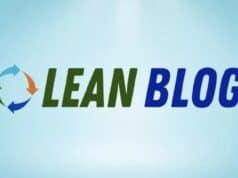UPDATE 2/9/06: Why the sudden interest in this article?? Email me.
This isn't new news, nor is it a new program, the GM “jobs bank”. When I worked at GM, 1995-96, as a new college graduate, it was a weird awakening to the working world that GM would pay people to not work. They really wasted the potential of those folks by just letting them sit around. It can't feel good to come to work and not be needed. It's better than not collecting a paycheck I guess, but not by much.
The reason I link to this was a pretty hard-hitting editorial in today's Wall St. Journal (link here, subscription required).
I also bring this up in the context of the lean people who say you must promise to not lay off employees as a result of lean efforts. In a way, the GM jobs bank program was of a similar vein, but it promised not to displace workers because of the robots and automation that were expected to lead to Roger Smith's “lights out factory” boondoggle. The WSJ points out, rightfully, that GM needed to have a growth strategy to make use of the Jobs Bank workers and that, without that, the program is a collossal waste and an embarrassment to GM.
If you're going to work on lean, yes, it's better to promise “no layoffs”, otherwise you'll quickly drain away any motivation your workers have to make suggestions and drive improvements. But, make sure you're ready to bring on more business and to grow, to make use of employees who will inevitably be freed up due to lean improvements.
Some quotes from the WSJ editorial:
Mr. Wagoner, meanwhile, is joining Ford Motor CEO William Ford in mounting a campaign to ask Washington for taxpayer help, starting with a passionate op-ed on these pages last week. But since Mr. Wagoner is asking for help, it's only fair that taxpayers get to ask some questions in return about the GM business practices that so concern the bond raters.
A good place to start is with its “jobs bank,” which is the company's euphemism for a post-employment limbo in which GM pays laid off members of the United Auto Workers not to work. If you want to know why GM's costs are too high for the number of cars it sells, here's one explanation.
….
GM has a host of problems, from the attractiveness of its product lines to the health-care costs it pays for its one million retirees. But a major one is size: It is a smaller company than it was or expected to be when it made the promises it's now trying to keep both to retirees and current workers. GM has some of the most productive industrial workers in the world, but it has too many of them for the number of cars it can sell today.
The jobs bank is both cause and symptom of that problem. We don't wish hardship on those workers, but the company's future now rests on its ability to make its payroll match its production. If the jobs bank — and the self-deception it represents — cannot be fixed, that millstone will continue to drag down what was once one of America's great companies.
What do you think? Please scroll down (or click) to post a comment. Or please share the post with your thoughts on LinkedIn – and follow me or connect with me there.
Did you like this post? Make sure you don't miss a post or podcast — Subscribe to get notified about posts via email daily or weekly.
Check out my latest book, The Mistakes That Make Us: Cultivating a Culture of Learning and Innovation:










[…] worry, these skilled tradesmen will go into the famous JOBS Bank and receive almost full pay for doing nothing (something I’ve written about a lot on this […]